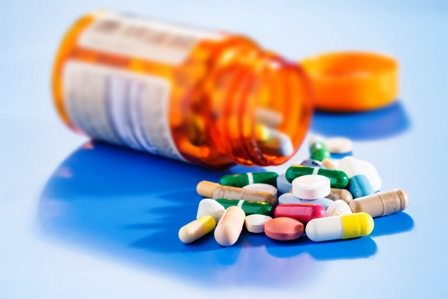Medicare Part D
Medicare Part D Rx is your prescription drug insurance Plan if you're on Medicare.
You can enroll in a Medicare Part D Rx Drug Plan in one of two ways- either a standalone Plan, "Part D," or through a Medicare Advantage Plan, also known as "Part C."
Medicare Supplement "Medigap" Plans (like, Plan G and Plan N) don't cover regular maintenance medications, such as medications to regulate cholesterol, high blood pressure, and diabetes. You must enroll in a standalone Medicare Part D Rx Drug Plan for coverage. We can help you with this!
If you enroll in a Medicare Advantage Plan "Part C" for your Medicare coverage, most of these Plans will include Part D Rx Drug coverage. (It's important to know what your drugs will cost with the Medicare Advantage Plan you're considering. We can help you with this!)
Suppose you choose Original Medicare Part A, which pays 80% of your hospital expenses, and Medicare Part B, which pays 80% of your medical expenses. In that case, you'll need to enroll in a standalone Medicare Part D Rx Drug Plan for drug coverage, even if you enroll in a Medigap plan. With a Medicare Advantage Plan "Part C," your Part A, B, and D are included all in one Plan.


Your drug costs could be very small or significant, depending on your medications. The amount you pay for your prescriptions is what it is and will be very close in price, whether you get your Part D Rx Drug Plan standalone or through a Medicare Advantage "Part C" Plan. If you join a Medicare Advantage Plan, you must use the drug plan included. Again, depending on your medications, it may not be the least expensive or the right drug coverage. We can help you with this!
If you stay away from Medicare Advantage coverage and want to buy a Part D Rx Drug Plan to go with your Medicare Part A, Part B, and your Medicare Supplement "Medigap" Plan, we can help you find the best drug Plan for your situation.
We input your medications and dosages into our Medicare system, which will display all the drug Plans in your area- so we can consult you on which Plan is right for you. As your needs and medications change, we can adjust your drug Plan to the best one for you.
Medicare Part D Rx Drug Plans can also change from year to year. The drug Plan formulary or list of covered drugs, the premium, deductible, copays, etc., can change each year and may leave you with a big surprise come the first of the new year. Let us help you evaluate your coverage every year!
Medicare offers Part D prescription drug coverage to everyone with Medicare. If you choose not to join a Medicare Prescription Drug Plan "Part D" or a Medicare Advantage Plan "Part C" with drug coverage, you’ll likely pay a late enrollment penalty. The penalty is waived if you have other creditable prescription drug coverage (employer, retiree, V.A.) or if you get drug plan Extra Help.
What Medicare Part D Rx Drug Plans Cover
All Plans must cover a wide range of prescription drugs that people with Medicare take, including most drugs in certain protected classes,” like drugs to treat Cancer or HIV/AIDS. A Plan’s list of covered drugs is called a “formulary,” and each Plan has its own formulary.
Medicare drug coverage typically places drugs into different levels, called “tiers,” on their formularies. Drugs in each tier have different costs. For example, a drug in a lower tier will generally cost you less than one in a higher tier.
List of covered prescription drugs (formulary)
Plans include both brand-name and generic prescription drug coverage. All Medicare Part D Rx Drug Plans and Medicare Advantage Plans with drug coverage have a formulary.
This helps ensure that people with different medical conditions can get the necessary prescription drugs. The formulary consists of at least two drugs in the most commonly prescribed categories and classes (medical or therapeutic categories), but Plans can choose which drugs they want to cover.
If you or your prescriber (your doctor or other health care provider legally allowed to write prescriptions) believes none of the drugs on your Plan’s formulary will work for your condition, you can ask for an exception. The formulary might not include your specific medication. However, in most cases, a similar drug should be available.
A Medicare Part D Rx Drug Plan can make some changes to its drug list during the year if it follows guidelines set by Medicare. Your Plan may change its drug list during the year because drug therapies change, new drugs are released, or further medical information becomes available.

2023 Costs for Medicare Part D Rx Coverage
The Monthly Premium for Part D Plans
Most drug Plans charge a monthly fee that varies by Plan. If you're in a Medicare Advantage Plan "Part C" with drug coverage, the monthly premium may include an amount for drug coverage.
Yearly Deductible for Part D Plans
You must pay this amount each year for your prescriptions, subject to the Plan deductible, before your Medicare drug Plan pays its share.
Deductibles vary between Medicare drug Plans. Some Medicare drug Plans don't have a deductible. No Medicare drug Plan may have a deductible of more than $505 in 2023.
In some Plans with a deductible, drugs on some tiers are covered before the deductible.
Copayment/Coinsurance for Part D Plans
You pay your share, and your Part D Rx Drug Plan pays its share for covered drugs. You pay these amounts for your covered drugs after the deductible (if the Plan has one). If you pay coinsurance, these amounts may vary because drug Plans and manufacturers can change what they charge at any time throughout the year. The amount you pay will also depend on the tier level assigned to your drug.
Your Plan may raise the copayment or coinsurance you pay for a particular drug when the manufacturer raises their price or when a Plan offers a generic drug, but you keep taking the brand name drug.
Once you and your Plan spend $4,660 combined on drugs (including deductible) in 2023, you’ll pay no more than 25% of the cost for prescription drugs until your out-of-pocket spending is $7,400 in 2023 under the standard drug benefit.
Costs in the Coverage Gap
Most Medicare drug Plans have a coverage gap (the "donut hole"). This means there's a temporary limit on what the drug Plan will cover for drugs.
Not everyone will enter the coverage gap. The coverage gap begins after you and your drug Plan have spent a certain amount on covered drugs. You're in the coverage gap once you and your Plan spent $4,660 on covered drugs in 2023. This amount may change each year.
Once you reach the coverage gap, you'll pay no more than 25% of the cost for your Plan's covered brand-name prescription drugs. Of the total cost of the drug, the manufacturer pays 70% to discount the price for you. Then your Plan pays 5% of the cost. Together, the manufacturer and Plan cover 75% of the cost. You pay 25% of the cost of the drug.
Example:
Mrs. Anderson reaches the coverage gap in her Medicare drug Plan. She goes to her pharmacy to fill a prescription for a covered brand-name drug. The price for the drug is $60, and a $2 dispensing fee gets added to the cost, making the total price $62. Mrs. Anderson pays 25% of the total cost ($62 x .25 = $15.50).
The amount Mrs. Anderson pays ($15.50) plus the manufacturer discount payment of $42 ($60 x .70 = $42) counts as out-of-pocket spending. So, $57.50 counts as out-of-pocket spending and helps Mrs. Anderson get out of the coverage gap. The remaining $4.50, 5% of the drug cost ($3), and 75% of the dispensing fee ($1.50) the drug plan paid don't count toward Mrs. Anderson's out-of-pocket spending.
During the coverage gap, Medicare will pay 75% of the price for generic drugs. You'll pay the remaining 25% of the cost. The coverage for generic drugs works differently from the discount for brand-name drugs. Only the amount you pay for generic drugs will count toward getting you out of the coverage gap.
Example:
Mr. Evans reaches the coverage gap in his Medicare drug Plan. He goes to his pharmacy to fill a prescription for a covered generic drug. The price for the drug is $20, and a $2 dispensing fee gets added to the cost. Mr. Evans will pay 25% of the Plan’s cost for the drug and dispensing fee ($22 x .25 = $5.50). The $5.50 he pays will be counted as out-of-pocket spending to help him get out of the coverage gap.
Items that count toward the Coverage Gap
- Your yearly deductible, coinsurance, and copayments
- The discount you get on brand-name drugs in the coverage gap
- What you pay in the coverage gap
Items that don't count toward the Coverage Gap
- The drug Plan premium
- Pharmacy dispensing fee
- What you pay for drugs that aren’t covered

Owner/Agent
For more personalized service, please call us at (888) 901-4870.
We will answer all your questions and assist you in finding the right Medicare Part D Rx Drug Plan for your needs.
Chad Cason - Licensed Agent/Agency Owner
